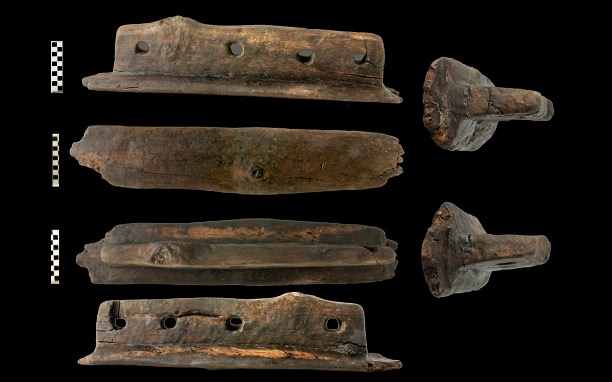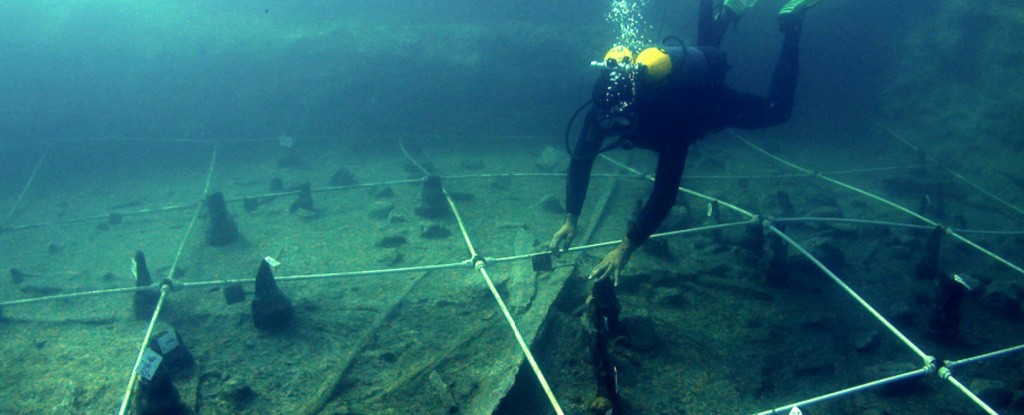There’s a large part of human history hidden beneath the sea. From Canada’s coastlines to the flat underwater fringes of Australia, sunken sites around the world have delivered troves of artifacts that give archaeologists a deeper understanding of where ancient humans lived and how they potentially traversed treacherous seas to reach new lands.
Stone Age farming communities in Europe depended on the seas to travel, trade and communicate, particularly as they spread around the Mediterranean during the Neolithic, between 10,000 and 7000 BC. But remnants of their technological prowess have been submerged in lakes and lagoons, or buried in soggy peat bogs – making them difficult to find.
Now, a team of researchers led by archeologist Juan Gibaja of the Spanish National Research Council has described a quintet of canoes dredged up from a Neolithic lakeshore village near Rome, Italy, that reveal the sophisticated boat-building techniques of seafaring communities in the region.
“Direct dating of Neolithic canoes from La Marmotta reveals them to be the oldest in the Mediterranean,” the researchers said in a statement.
The Neolithic settlement of La Marmotta was discovered by archaeologists in 1989 submerged 8 meters (25 feet) beneath the surface of Lake Bracciano, which is connected to the Mediterranean Sea by the River Arrone.
Excavated between 1992 and 2006, and again in 2009, the site and parts of its wooden dwellings have been exceptionally preserved by mud and water, along with an enormous collection of wooden tools used to weave textiles, fibrous baskets for carrying food, and five dugout canoes.
Those finds cast La Marmotta as a thriving farming community, which was likely an important hub for trade given its location close to the Mediterranean coast. Gibaja and colleagues’ new analysis of the five canoes shows how that trade could have been made possible with the townspeople’s sophisticated woodworking and ship-building skills.
The canoes were built from hollowed-out trees, which grew some time between 5700 and 5100 BCE. Measuring an estimated 11 meters (36 feet) in length, one of the boats – which happened to be made of oak – was considered to be much larger than needed to cross Lake Bracciano. The other four canoes weren’t much smaller, from more than 4 meters to 9.5 meters long, with two made of alder, one of poplar, and one of beech, the researchers found.
The canoes also had cross beams to reinforce the hulls, and in one case, three T-shaped, peg-like objects were found inserted into the wall of the canoe at evenly-spaced distances, to which ropes or even a sail might have been fastened.

“There must have been people who knew how to choose the best trees, how to cut the trunk and hollow it by burning out its middle, and how to stabilize the dugout with transversal reinforcements on its base, or perhaps by the use of side poles or even parallel canoes in the form of a catamaran,” the researchers write in their published paper.
“Those strategies would have provided greater safety and stability, and greater capacity for the transport of people, animals and goods.”
Considering the similarities of these features to more recent nautical technologies, the researchers suspect “many major advances in sailing were made during the early Neolithic” and that there may be more boats preserved deeper in the mud of Lake Bracciano. It’s estimated only one-quarter of the site has been excavated so far.
However, tangible reasons to explain why La Marmotta was suddenly abandoned around 5230 BC still elude archaeologists.
With so many objects left behind and well-preserved, the archeological record suggests people left hastily perhaps because rising waters quickly inundated the town before its remains could degrade.
The study has been published in PLOS ONE.





